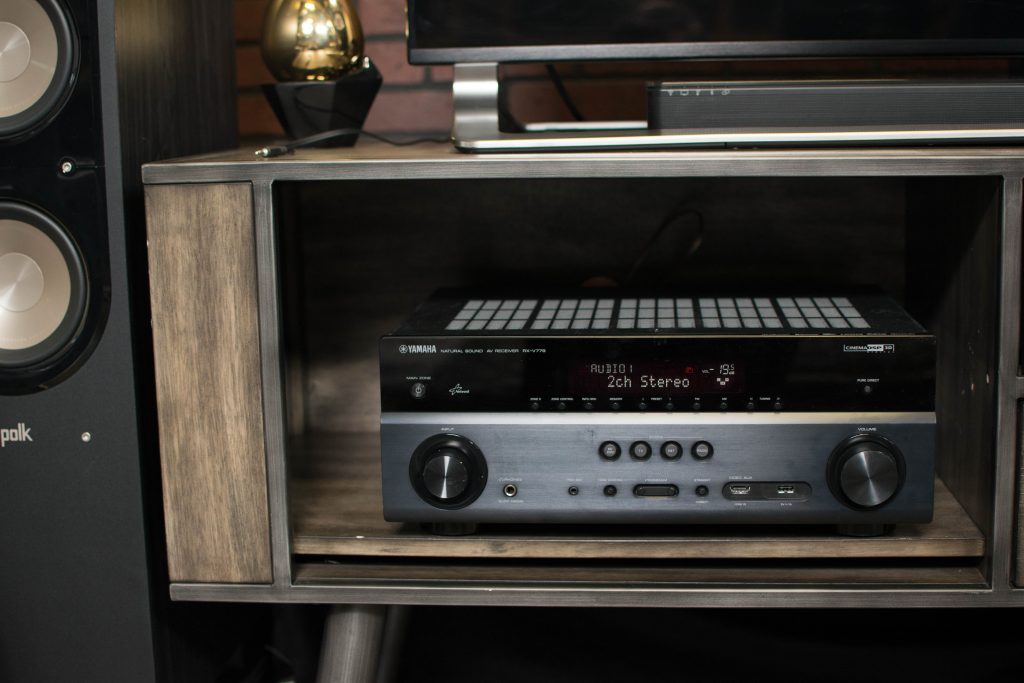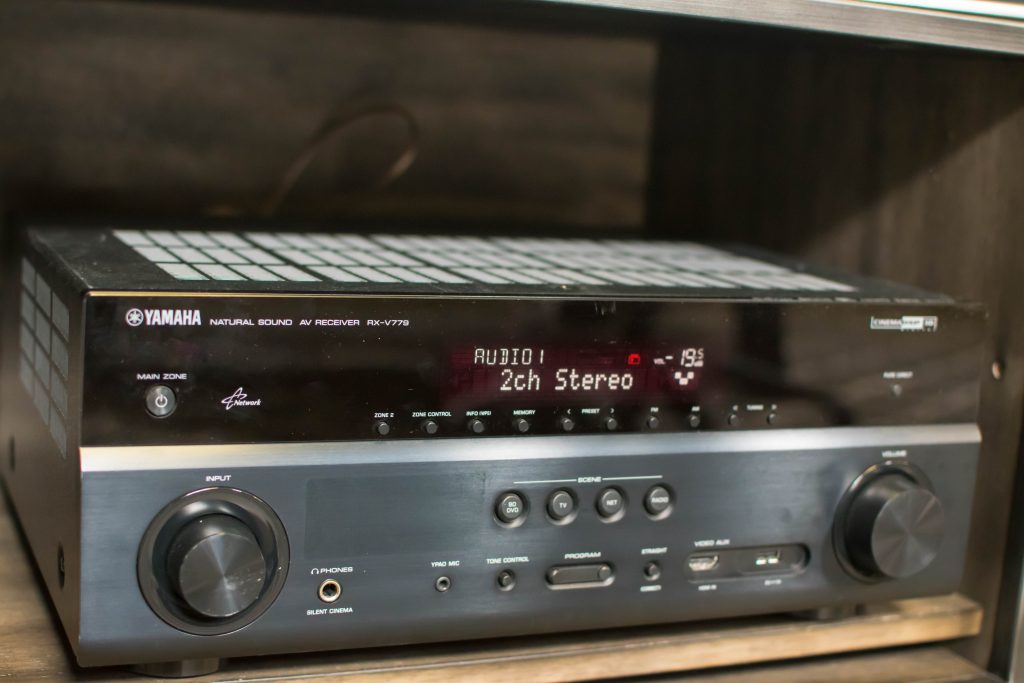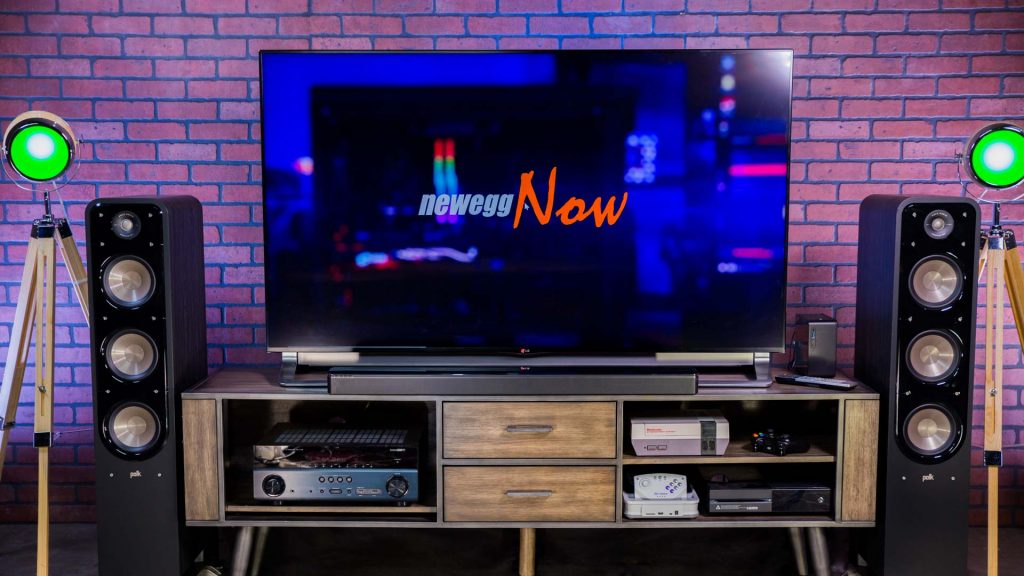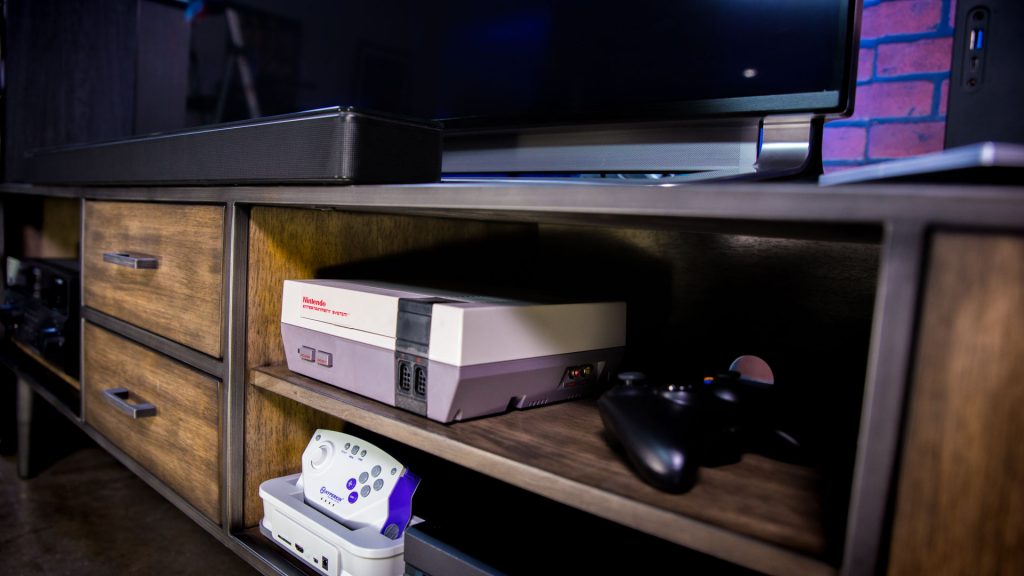

We’ve all had at least one momentous experience with sound. You know, the first time you walked into a room with a movie or music playing and you actually felt the audio in your body. For me, that was the late 90’s in middle school when I first experienced an IMAX movie on underwater kelp forests. While not exactly the most heart-pounding excitement, I remember vividly the way the soundtrack made me feel like I was surrounded on all sides and it sucked me into the movie. I didn’t know anything about home theater, receivers, or speakers but I knew the experience was far better than watching TV at home.
With the incredible content available on-demand from streaming services like Netflix, Hulu, Spotify, and more people cutting the cord, the resurgence of the home theater is back with more usability than ever before. While most immediately turn to the TV first when thinking about a home theater setup, the truth is that the receiver is the key piece that brings it all together.
Though rarely seen (and definitely not as sexy as a big LED TV), receivers operate behind the scenes, taking all the different inputs from TV, Blu-ray, turntables, CD players, or any other media device and distributing the power to various speakers for an encompassing audio experience.
Since the receiver is such an instrumental part of the home theater, it should be the first component purchased when building out the ecosystem. True, most people generally have a TV before even thinking about expanding outwards, but since the TV can act as a standalone component and has little impact on the compatibility of the rest of the system this stands correct.
What Does a Receiver Do?

Before even diving into what to look for when shopping for a home theater receiver, it helps to know what it is a receiver does. At the general level the receiver takes in media input from TV and other audio players, amplifies the sound, and pushes the sound out to the various speakers, or channels.
Receivers can become more complex with a variety of advanced features, but sound and video processing are key to unlocking the potential of your media and maintaining quality sound. Even if you don’t plan to blast your music at loud volumes, the fine details and high fidelity of the original content is far superior to what comes standard on TVs today. While sound bars are quick and easy plug-n-play options for improved sound quality from a television, they don’t remotely offer the quality that receivers can bring to the table (although some can be quite good).
How Many Channels Do You Need?
The first step to actually building a home theater is to determine how robust your setup will be, and how many channels it will have. The number of channels a receiver has is the number of speakers that it can power. The simplest channel configuration is stereo, or a 2.1-channel system with two speakers and one subwoofer. This alone adds great depth and vibrancy to the sound, as it allows the multiple dimensions of the audio tracks to reveal themselves in a more realistic way.
While the stereo receiver might be often the cheapest and most attractive for those on a budget, it can be limiting. For example, once you have a 2.1-channel receiver no additional speakers can be added to it down the road, so be sure that this is the right choice for you. Those who have small apartments with limited free space or ability to run wiring behind walls might find this to be a suitable option.
Moving up into the actual surround sound territory, 5.1-channel home theater systems deliver the immersive experience from all directions (center, forward right/left, and rear right/left) along with a subwoofer. The benefit of choosing a receiver that has more channels than are needed at the moment is that they can still operate in a lower capacity, with room to grow outwards as space and budget permit.
Once you start getting to 7.1-channel receivers and home theater setups, things really start to get interesting. While this allows the flexibility to operate all seven speakers in one room, it also could be configured to run multiple zones with audio playing in multiple rooms. Multi-zone receiver setups can play either the same audio in each zone with different volumes, or actually play different audio tracks entirely. This is often used in homes where people want to have fixed outdoor speakers, without sacrificing quality.
Some home theater receivers can power dual subwoofers, which can be 7.2, 9.2, 11.2, or even 13.2-channel systems for very large homes and multi-zone setups. These high-channel systems can have the additional subwoofer located in a different zone from the first, or also run as single-subwoofer systems.
Powering the System

The next question when considering which receiver is right for you is the question of power, so how much power do you need? The simple answer is more. You will want to have a receiver with more power than you think you need, in the event that speakers are upgraded down the line. Typically, if a receiver has a set number of channels then it will be able to effectively power them all.
The variable in this situation is the type of speaker, as high-quality speakers or large spaces require more power to effectively operate. Tower speakers require more power to operate than satellite speakers, however they can both technically be used in similar positions within the home theater. The greater the wattage on a receiver, the more efficiently it can power the various drivers while maintaining low distortion.
Networking & Connectivity

Most modern media players (TVs, Blu-ray, turntables, CD players, gaming consoles, etc.) all use HDMI cables to connect to external devices, so it is important to choose a receiver that has as many HDMI ports (if not more) that you will need to link up all the different devices to the system.
Many receivers also have an Ethernet port for direct access to the internet, which is great for those who want to stream music directly without worrying about Wi-Fi bandwidth limitations. That being said, some home theater receivers also do allow for Wi-Fi or Bluetooth connectivity to quickly and easily stream media from portable devices. If this is something that is important, be sure to double-check whether the receiver you are looking at offers this connection.
Surround Sound Formats
Beyond just the number of channels a receiver can support, there are different surround sound formats to take into account when searching for the best home theater receiver for you. Due to the advancement in audio engineering and sound technology over the years, modern video and audio content has information encoded into the track that helps to bring out the best quality when paired with the optimal setup.
This information goes unnoticed when using sub-optimal equipment, however when paired with the higher-end receivers and channel count the fine details and sound dimensionality are increased to deliver more encompassing sound.
Currently the best surround sound format is Dolby Digital Atmos, which uses ceiling-mount speakers (or speakers that can direct sound towards the ceiling) to create a fully immersive experience. The caveat is that in addition to having a receiver with Dolby Digital Atmos capability and the channel count, the media needs to have this encoding built into the content in order to experience it.
While this is the pinnacle of surround sound technology there are a variety of different sound formats to pay attention to when choosing the best receiver, such as DTS, THX, and many more that are explained in great detail here.
Many receivers also have 4K video capability, and this is a critical component for building the perfect home theater setup. Since the receiver will quarterback the whole ecosystem, you want to make sure it has the ability to process the highest currently available quality for video content.
Best Home Theater Receivers for the Budget
There are numerous home theater receivers to choose from, and all the factors mentioned above should be taken into account. At the end of the day, what fits best into your home and budget along with what makes you happy should be the deciding factor, however we have put together a quick list of some different options in various price brackets, separated for simplicity as “Stages”.
Channel count, power, connectivity options, and surround sound format capabilities all play into the different level of receiver.
Stage 1- Under $350
Check one, two. Diving into the world of home theater can be a bit intimidating at first, but offers tons of benefits over standard TV audio. All audio/video channels are run through the receiver, and distributed out to the speakers for an upgraded sound experience. For those with limited space or budget, smaller 2.1-channel receivers can operate a lean system, while stepping up to 5.1-channels offers far superior sound while not breaking the bank. The first step is to think about what media the system will be used with, what the budget is, and how many channels are required. These entry-level receivers are a great starting point.
YAMAHA RX-V385 5.1-Channel AV Receiver with Bluetooth
Harman Kardon AVR-1610S 5.1 Channel Network A/V Receiver
Yamaha R-N303BL Stereo Receiver with Wi-Fi Bluetooth & Phono, Works with Alexa
Harman Kardon AVR-1510S 5.1-Channel Network AV Receiver
Stage 2- $351-600
With these receivers, full-home theater mode is engaged. Systems in this tier will be larger, either 5.1 or 7.1-channels which means more space, more power, and a bigger budget. Some systems are even 7.2-channel, which means multiple subwoofers for extreme bass. If HD media is a critical component for entertaining, this is where things get interesting. 4K video and HD audio capabilities are often realized with this level, and various media sources mean streaming or Bluetooth is all within reach.
Yamaha RX-V685 7.2-Channel 4K Ultra HD AV Receiver with Wi-Fi, Bluetooth, Alexa, and MusicCast
Pioneer VSXS520 5.1 Ch Slim Network AV Receiver
Onkyo TX-RZ720 7.2-Channel Network A/V Receiver with Wi-Fi, AirPlay, Spotify, and Bluetooth
Pioneer VSX832 5.1 Ch Network AV Receiver with Ultra HD Pass-through with HDCP 2.2 (4K/60P/4:4:4)
Denon AVR-X2400H 7.2 Channel Full 4K Ultra HD Network AV Receiver with HEOS
Stage 3- Above $600
Hold on to your hats, as things get taken to a whole new level with the elite-tier receivers. Across the board, this is for those who spend a lot of time entertaining or just must have the best quality. Price is far higher, but whole-home audio can be set up using these receivers as a central hub. Premium audio certification like THX or Dolby Digital mean refined audio processing comes standard, and 4K video capability is virtually always included. As many inputs as you want, you can have them all and power numerous rooms all on different audio settings or speakers. Backyard BBQ with party tunes while the kitchen has smooth jams and classical in the study? No problem. Build your audio masterpiece that will last a lifetime, without limitations.
Marantz AV8805 13.2-Channel Full 4K Ultra HD Network AV Surround Preamplifier with HEOS
ONKYO TXNR787 Network/BT THX® Certified Select 9.2 Ch A/V Prosumer Receiver
Denon AVR-X4300H 9.2 Channel Full 4K Ultra HD AV Receiver
Pioneer VSXLX303 9.2 Ch Network AVR 200 Watts/Ch 6 Ohms
Marantz AV7704 11.2 Channel Full 4K Ultra HD A/V Pre-Amplifier with HEOS
(Note, all prices and products are accurate at time of article publication, although some may have changed or are no longer available)

